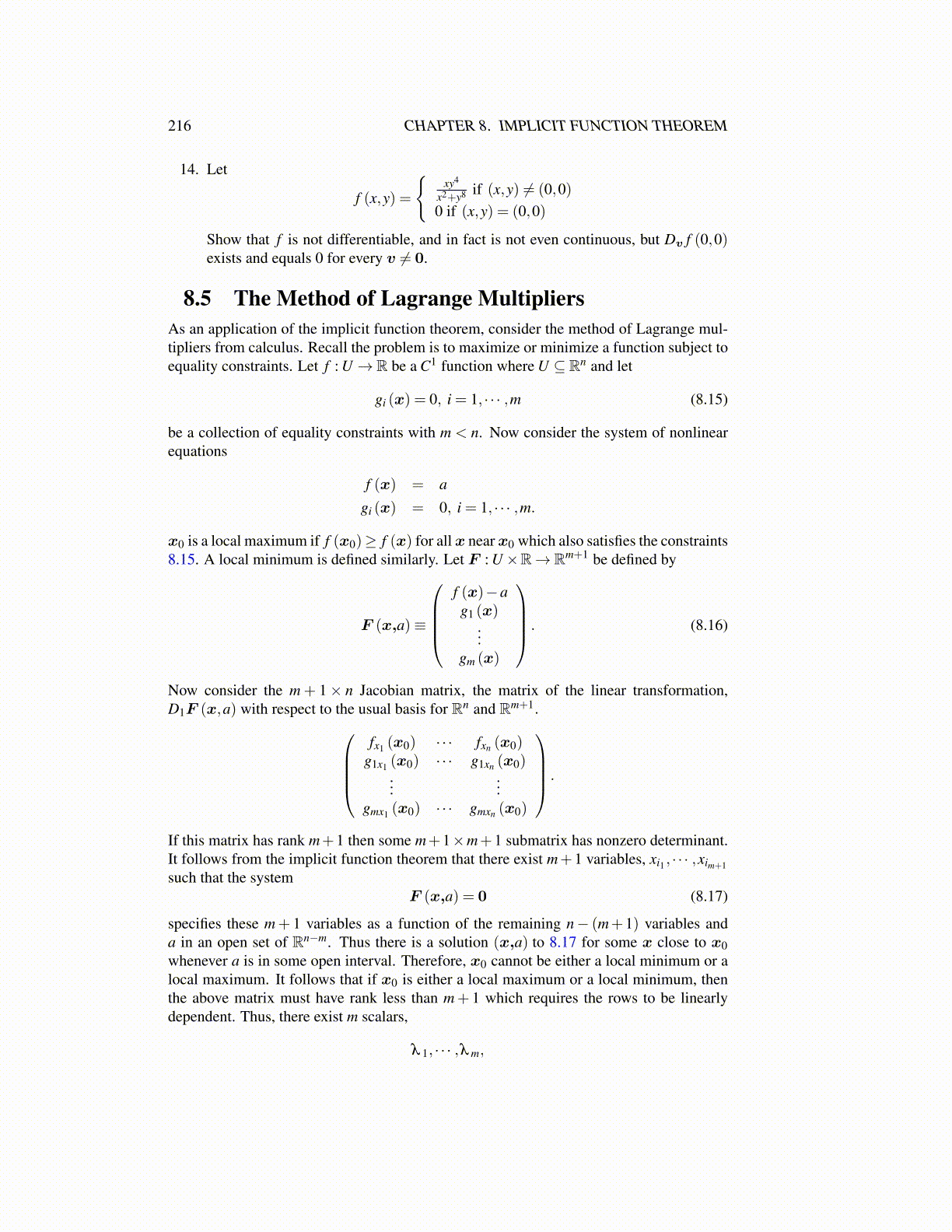
216 CHAPTER 8. IMPLICIT FUNCTION THEOREM
14. Let
f (x,y) =
{xy4
x2+y8 if (x,y) ̸= (0,0)0 if (x,y) = (0,0)
Show that f is not differentiable, and in fact is not even continuous, but Dv f (0,0)exists and equals 0 for every v ̸= 0.
8.5 The Method of Lagrange MultipliersAs an application of the implicit function theorem, consider the method of Lagrange mul-tipliers from calculus. Recall the problem is to maximize or minimize a function subject toequality constraints. Let f : U → R be a C1 function where U ⊆ Rn and let
gi (x) = 0, i = 1, · · · ,m (8.15)
be a collection of equality constraints with m < n. Now consider the system of nonlinearequations
f (x) = a
gi (x) = 0, i = 1, · · · ,m.
x0 is a local maximum if f (x0)≥ f (x) for allx nearx0 which also satisfies the constraints8.15. A local minimum is defined similarly. Let F : U×R→ Rm+1 be defined by
F (x,a)≡
f (x)−ag1 (x)
...gm (x)
. (8.16)
Now consider the m + 1× n Jacobian matrix, the matrix of the linear transformation,D1F (x,a) with respect to the usual basis for Rn and Rm+1.
fx1 (x0) · · · fxn (x0)g1x1 (x0) · · · g1xn (x0)
......
gmx1 (x0) · · · gmxn (x0)
.
If this matrix has rank m+1 then some m+1×m+1 submatrix has nonzero determinant.It follows from the implicit function theorem that there exist m+1 variables, xi1 , · · · ,xim+1such that the system
F (x,a) = 0 (8.17)
specifies these m+ 1 variables as a function of the remaining n− (m+1) variables anda in an open set of Rn−m. Thus there is a solution (x,a) to 8.17 for some x close to x0whenever a is in some open interval. Therefore, x0 cannot be either a local minimum or alocal maximum. It follows that if x0 is either a local maximum or a local minimum, thenthe above matrix must have rank less than m+ 1 which requires the rows to be linearlydependent. Thus, there exist m scalars,
λ 1, · · · ,λ m,